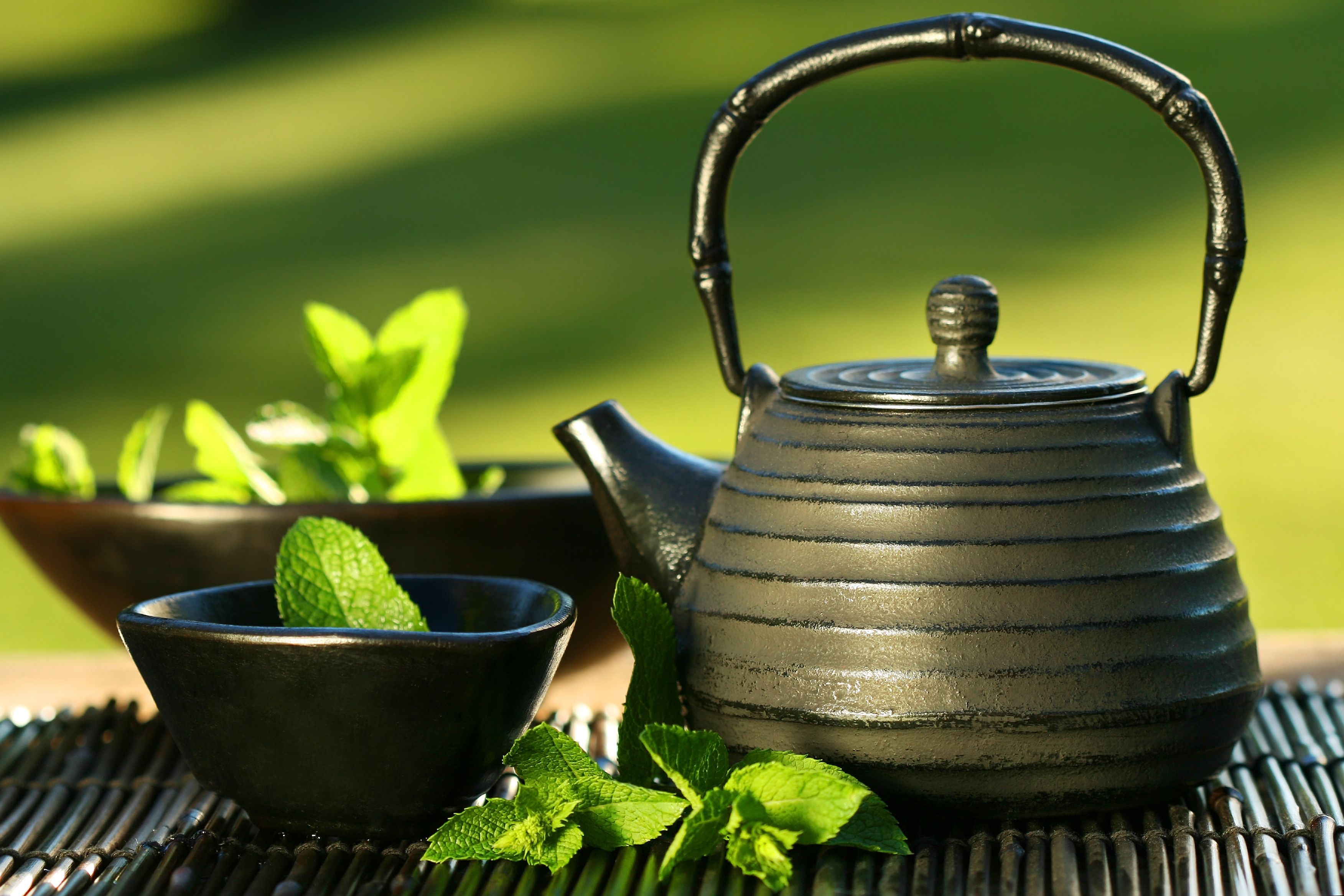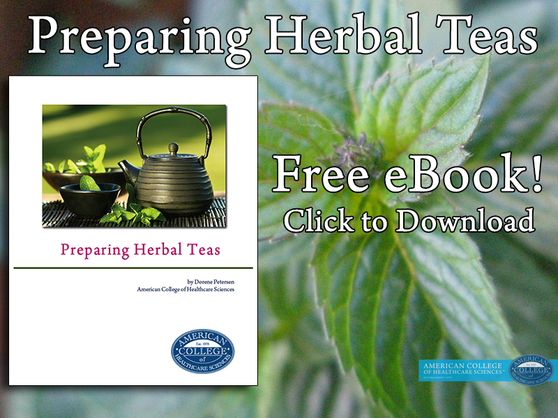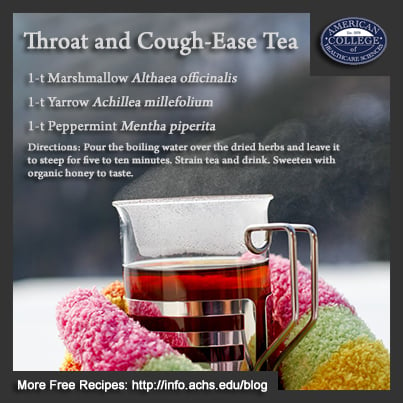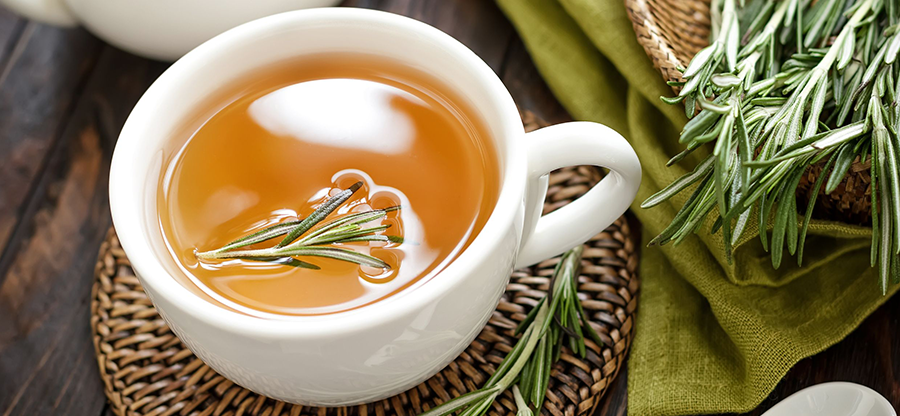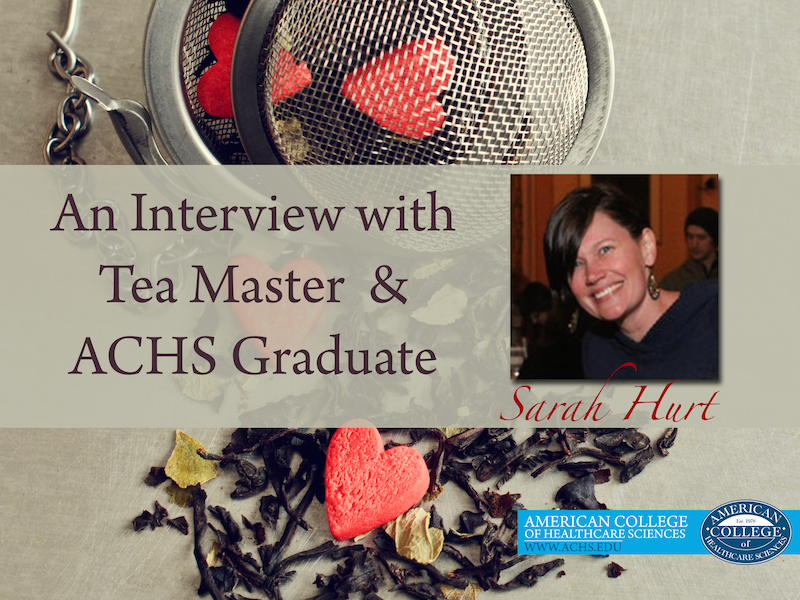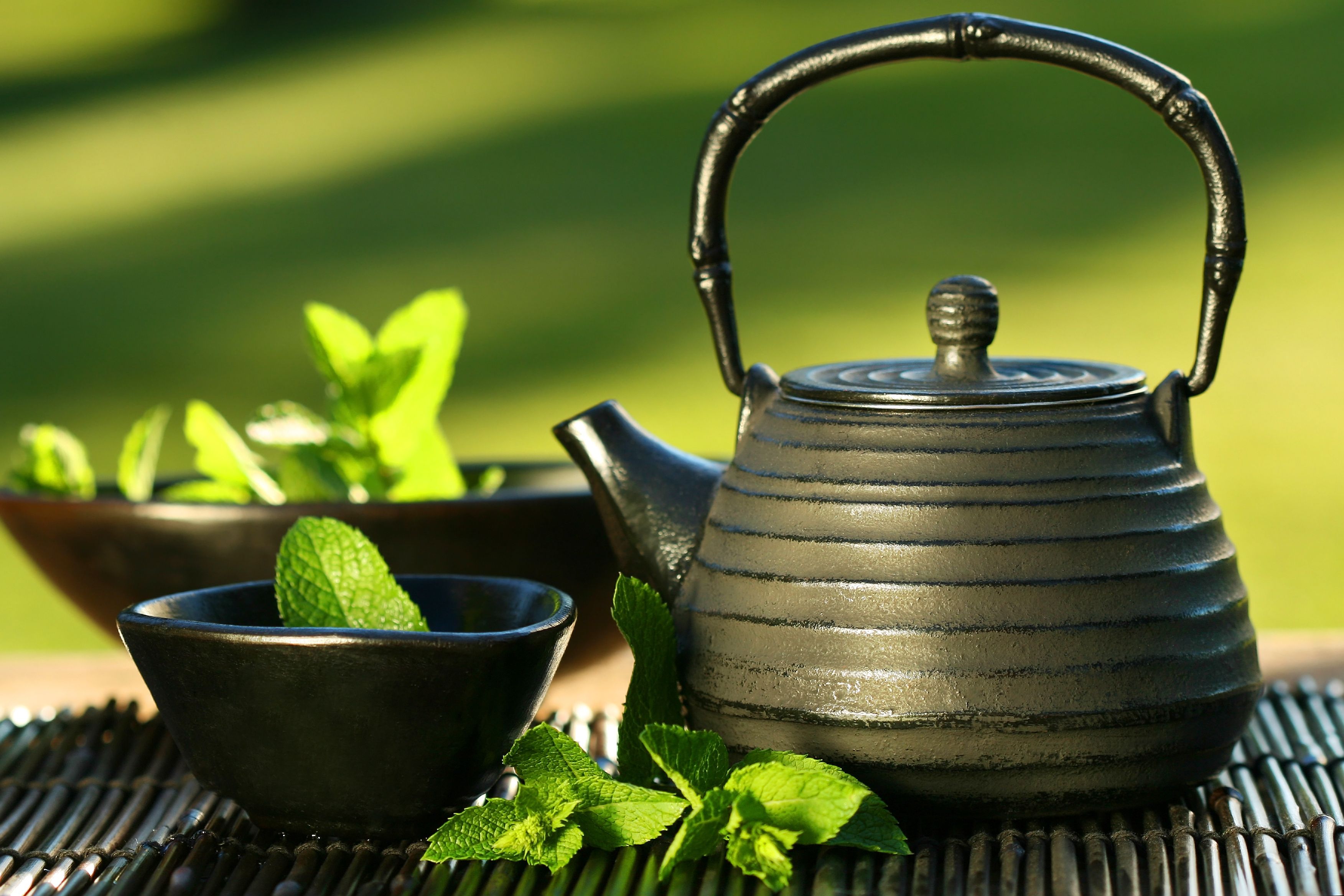 Herbal teas, as well as being delicious to drink, can help tone, soothe, and balance the body with regular use. But, be sure to distinguish herbal teas from black tea. Tannin or black tea is from the plant Camellia sinensis, a medicinal herb that soothes and relaxes, but if taken too frequently the body becomes so accustomed to it that when it is really needed, it has little or no effect. It also contains two powerful alkaloids, theobromine and caffeine, which are poisonous when taken in excessive doses.
Herbal teas, as well as being delicious to drink, can help tone, soothe, and balance the body with regular use. But, be sure to distinguish herbal teas from black tea. Tannin or black tea is from the plant Camellia sinensis, a medicinal herb that soothes and relaxes, but if taken too frequently the body becomes so accustomed to it that when it is really needed, it has little or no effect. It also contains two powerful alkaloids, theobromine and caffeine, which are poisonous when taken in excessive doses.
What is the difference between black, green, white, and oolong tea?
All are from the Camelia sinensis plant, but are processed in different ways resulting in a different level of antioxidants.
- Black tea is wilted when it is harvested, and fermented (or oxidized i.e., it is exposed to oxygen).
- Green tea is wilted and not fermented (or oxidized); hence, it has more antioxidants, which is why it is recommended for breast cancer.
- Oolong tea is wilted and partially oxidized.
- White tea consists of the immature buds that are steamed when they are harvested, dried immediately, and not fermented at all. It has the highest level of antioxidants.
While excessive use of black tea is known to deplete the body of iron and B vitamins, the antioxidant properties in green and black tea are thought to be active agents against skin cancer. Just remember, given the other constituents in black tea, green tea is a healthier source of antioxidants!
To start using teas at home as part of your everyday health and wellness routine, there are just a few things to keep in mind. To ensure the tea you are consuming is of the highest quality, remember:
- Measurements are usually for dried herbs, unless stated otherwise. If you are using fresh herb, double the stated quantity.
- The quality of your herbs will determine the quality of the finished herbal product. Old herbs = poor quality tea! So always buy from a reputable supplier that practices stock rotation, preferably organic!
- To preserve the delicate flavor and active constituents, the herbs used in teas must be perfectly fresh or carefully dried.
- Ensure that your herbs are organic or spray free, have not been gathered near a roadway, are free from insects and mold, and that they have a good aroma and color. They should smell as close to the fresh herb as possible and have retained their color.
- Only use fluoride- and chlorine-free water in herbal preparations.
- Weigh your herbs. Don't measure them! 1 ounce of red clover (Trifolium pratense) flowers can fill 2 cups, while 1 ounce of yellow dock (Rumex crispus) root is 1/4 cup! Ensure you have a small, accurate scale on hand when making your herbal preparations.
- Never use aluminum. Aluminum can react with the chemicals in the herb and affect the product. Plus, aluminum may accumulate in the body. Instead, use stainless steel, Pyrex, earthenware, or enamel that is free of chips and cracks.
- Do not steep herbal teas for too long. Lengthy steeping can extract excessive quantities of tannin and the action of the herb may alter dramatically. For example, rosemary (Rosmarinus officinalis) tea, when steeped for 5-10 minutes, is a mild soporific (inducing or tending to induce sleep), but left for too long it can have quite the opposite effect.
- Choose a teapot that is made from ceramic, porcelain, china, earthenware, glass, or enamel. Metal can interfere with the active constituents of the herbs and produce a metallic taste.
- Try to drink 3 cups of herb tea every day. Choose herbs that are corrective for some imbalance in your body.
- Drink tea after meals. This avoids diluting your gastric juice and interference with digestion.
- If you need to add sweetener, use local raw honey or try a slice of lemon. Herb teas are usually enjoyed without milk or cream.
Ready to get started? It's easy!!! Here's a basic tea recipe you can try at home!
- 1-t dried herb or 2-t fresh herbs
- 1-cup boiling water
Start with peppermint or chamomile, but once you feel comfortable with the process, start experimenting with blends. Custom tea blends make great gifts for friends and family! Here's a list of some herbs you may want to include in your seasonal herbal teas, including a brief indication of their use:
- Calendula (Calendula officials) flowers: indigestion, skin troubles
- Catnip (Nepeta cataria) leaves: headaches, restlessness, digestive aid, infection prevention
- Chamomile (Matricaria recutita) flowers: headaches, nervousness, indigestion, ulcers, arthritis, and infection prevention
- Chickweed (Stellaria media): coughs and colds
- Lavender (Lavandula angustifolia) flowers: headache and nervousness
- Lemon balm (Melissa officinalis) leaves: headache and insomnia
- Lemongrass (Cymbopogon citratus): refreshing and uplifting
- Peppermint (Mentha piperita): flatulence and nausea
- Plantain (Plantago major): colds
- Red clover (Trifolium pratense) flowers (simmer): colds, skin problems, and blood cleanser
- Rosemary (Rosmarinus officials): circulation, nervousness, depression, food poisoning preventive, and decongestant
- Sage (Salvia officinalis): fevers, tonic, wounds, digestive aid, blood sugar regulation, and sore throat
- Thyme (Thymus vulgaris): colds, indigestion, and cough remedy
- Valerian (Valeriana officinalis): tension and headaches
- Yarrow (Achillea millefolium): colds, indigestion, and cough remedy
Remember, there are no definite rules for combining herbs in a tea mixture. Taste is a major priority! Don't love the taste of your creation? Add one of these flavor enhancers:
- Peppermint (Mentha piperita)
- Fennel (Foeniculum vulgare)
- Ginger (Zingiber officinale)
- Lemon balm (Melissa officinalis)
- Lemon verbena (Aloysia citriodora)
Herbal teas are a great DIY holistic health project you can do at home. Why not involve your kids, friends, and family too? Fun and laughter can also be great medicine, so we say the more the merrier! Let us know how your blending goes - we love hearing about new recipes and herbal combinations.
Have fun!
Note, tea is fantastic, but it cannot ensure world peace. And, this information has not been reviewed by the FDA. This information has been presented for educational purposes only and is not intended to treat, diagnose, cure, or prevent disease. Always consult with your primary care physician or naturopathic doctor before making any significant changes to your health and wellness routine.

